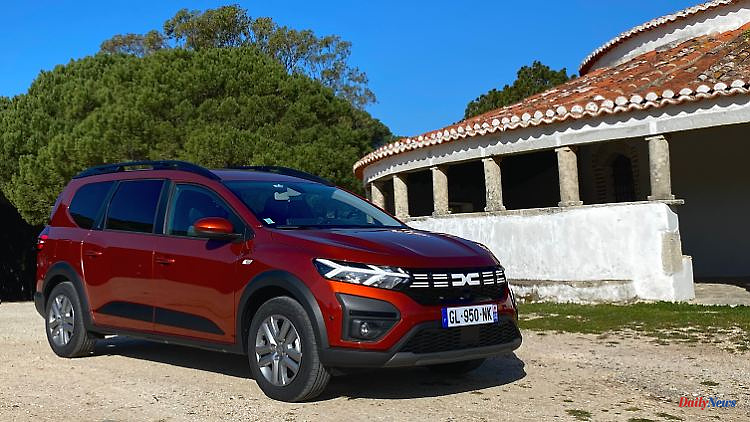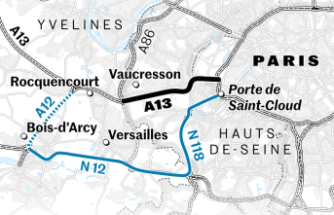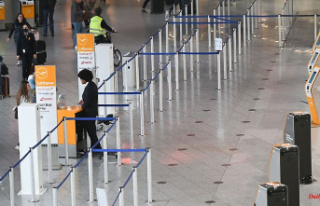Dacia's first hybrid is, of all things, a van and thus belongs to a segment that more and more manufacturers are neglecting. That could increase the sales opportunities for the Romanian practitioner even further. However, the all-rounder with up to seven seats is not a bargain.
You have to admit: Dacia, which has been on the German market for 18 years, took motorists' hearts by storm many years ago - and that as a newcomer brand. Wow. And just in passing, opened up a completely new customer target group for new cars - namely buyers who used to look around on the used car market.
This may work with the cheap Logan or Sandero, but not with the higher-end jogger. In the leanest version, it starts at 16,800 euros. That's cheap, yes. The course is impressive, especially in view of what is on offer, but that's still a lot of wood for the struggling father of a family of five. And now the MPV comes around the corner with a fancy-looking hybrid drive. You get 23,800 euros from the list. bam
Sure, the jogger equipped with two engines has advanced to become the 141 hp top model with fuel-saving ambitions - well and good. But get the extra price compared to the weaker petrol models through the reduced consumption? Pretty tedious, at least for infrequent drivers.
Just turn on the calculator. Assuming you cover 25,000 kilometers per year and manage to keep to the average WLTP consumption of 4.9 liters per 100 kilometers (it worked quite well on the test drive). Makes 1225 liters at a realistic price of 1.70 euros per liter. So that's about 2083 euros a year in fuel costs. For the 110 hp petrol engine, the factory estimates 5.7 liters of Super per 100 kilometers. Would be 1425 liters, so 200 liters more per year. That would be around 2423 euros and thus 340 euros savings compared to the pure petrol engine. You will only get the additional 6600 euros in just over 19 years. Okay, maybe a tad earlier assuming rising fuel prices.
The true champion of savings at the gas station is of course the gas version. Under the same conditions, this would destroy around 1,925 liters of liquid gas, which, given the gas price of around one euro per kilogram, would mean annual fuel costs of exactly 1,925 euros. Here the hybrid is not at all suitable as an economic alternative.
It quickly becomes clear that the price is not at all important. The decision in favor of the hybrid is rather for maximum comfort in the jogger, because the obligatory automatic transmission for the basic variants cannot be obtained for money or good words. It even forms the basis for this machine hybrid, because the electric and combustion engines are linked via a unit. And in a way that makes a starting clutch obsolete. The vehicle is always rolled off electrically, which makes starting off particularly smooth. Only when the jogger is already in motion does the combustion engine engage in the drive and add 94 hp.
And now it gets really complicated: The compact unit has a total of six translations, four of which split the 148 Newton meters of torque from the combustion engine. The 205 Newton meters and 47 hp electric motor, on the other hand, runs over two separate gear ratios and is flexibly integrated into the drive train. Another electric unit with 20 hp is supposed to smooth the train and, last but not least, be responsible for the synchronization of the gear pairs. It ensures that all components run smoothly and harmoniously, which the driver also feels.
Isn't that a bit overly complex, you might ask. Especially since the hybrid does not stand out with significantly better driving performance. If you look at its pure acceleration value (9.8 seconds to 100 km/h), it is noticeable that it is nominally hardly faster (10.5 seconds) than the simple TCe110. But more sovereign, because it is so directly connected. No matter what load condition or speed you accelerate from - interruptions in traction are completely alien to this Dacia. And the box sorts the translations without jerks, only sometimes a quiet click indicates that the inner workings are being worked on diligently. Under full load, the 1.6-liter four-cylinder naturally gets a little more noisy. But he can also do that in the bread and butter class.
And no matter how complex the motor-transmission unit may be, the technicians rely on simple components for the petrol part: In case of doubt, the intake manifold injector burns the mixture more quietly than more efficient direct injectors, and the integrated electric motor makes up for the sluggish response of the vacuum cleaner. Should be cheaper on the cost side in perspective. This could be an advantage, especially for new car customers who keep their car for a long time, because defective turbochargers are expensive to repair. Not here, because there is none.
Incidentally, this hybrid cannot be charged externally, but primarily serves to capture the braking energy in its 1.2 kWh battery, which would otherwise have dissipated as heat via the brake discs. The e-machine, in turn, feeds itself from this modest power source and helps to save fuel, for example by boosting precisely when the combustion engine is running in the unfavorable operating range. This is called load point shifting.
However, the joy about the generous amount of space in the 4.55 meter long van is at least as great as the joy about the soft drive unit. Even if the daily trip to kindergarten or school turns into an annual vacation trip. The furniture isn't even that bad. In addition, the 1.5-ton vehicle rolls over bumps quite reliably and does not shake its human cargo excessively. So everything is wonderful on the hybrid van, which certainly has the best price-to-space ratio?
Well, you can forgive the Dacia that the interior design with plenty of hard plastic is not quite as chic as the exterior design. The succinct brand lettering in stylish white on the boot lid catches the eye, as do the large "DC" letters on the radiator grille, also painted white. It's cool. Then there are also the striking LED daytime running lights in arrow optics and the hip roof rails branded with the model name.
One or the other customer might like the fact that the designers have mixed the rear design with a dash of Volvo. After all, it's not inspired by the worst brand. In addition, the "Expression" equipment line features skilfully placed trekking elements such as black wheelhouse cladding plus underbody protection. In this way, there is a bit of an SUV feeling even in the van. Certainly no coincidence, because the customers like what the manufacturers in turn know.
Would you like a bit of luxury in the Dacia? Parking beeper, rain sensor, smartphone integration (including eight-inch touchscreen) are free. And in the case of the hybrid edition, there is even a speedometer element that is completely on the screen. However, there are also special equipment. A navigation module costs an additional 400 euros, alloy wheels require an additional 200 euros. Dacia would like to see an extra 250 euros for the seat heating, while special paints cost 550 or 650 euros. And the 25,000 euro threshold would already be exceeded. Seven seats (really practical), the group can also pay another thousand.
Fortunately, a bit of practicality comes as standard in the form of the chic roof rails and a whopping 1800 liters of luggage space. At least the hybrid is no longer a Dacia for the people. With proper equipment, it costs more than twice as much as the basic Dacia Sandero model. Even a Dacia can become a luxury object.












